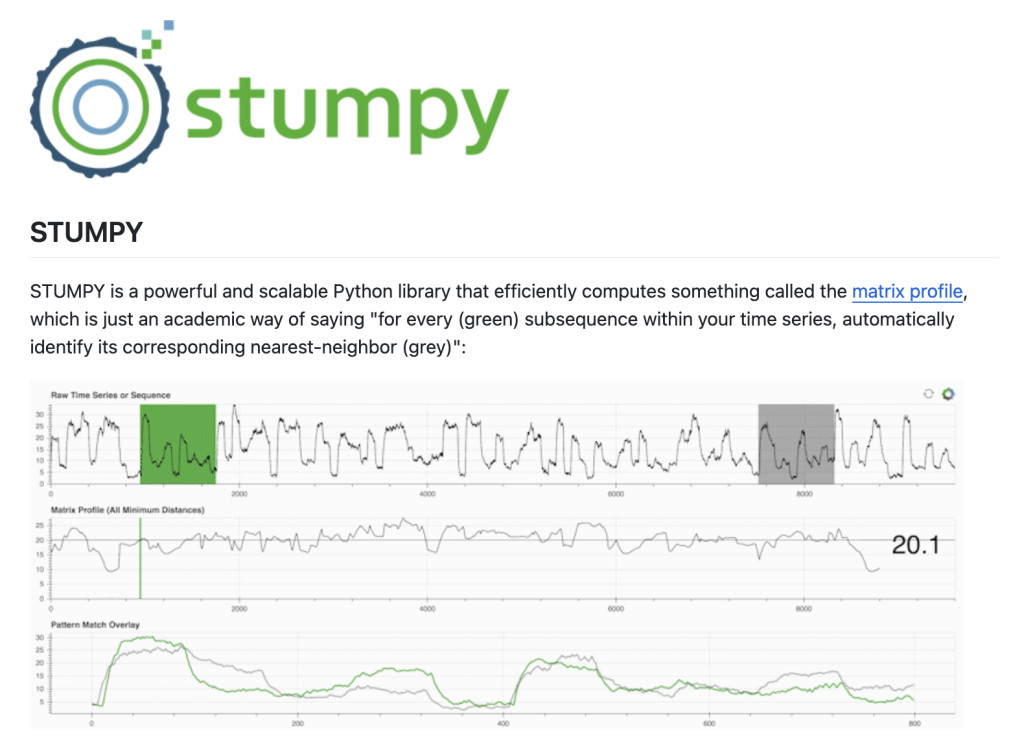Time series data is used globally across various domains, including finance, healthcare, and sensor networks. Identifying patterns and anomalies within this data is crucial for several tasks like anomaly detection, pattern discovery, and time series classification, which can significantly impact decision-making and risk management. Time series analysis methods require high computational resources for understanding complex patterns in massive datasets. Brute force approaches and statistical models are constrained by high time complexity and sensitivity to noise.
Researchers developed Stumpy to efficiently address the challenge of extracting meaningful patterns and anomalies from large time series datasets. Traditional methods for time series analysis often suffer from high computational complexity, making them impractical for extensive datasets. The tools and algorithms of these models struggled to balance accuracy and computational efficiency, limiting their applicability in real-time and large-scale scenarios.
Stumpy introduces a highly efficient method for time series analysis by computing matrix profiles. The matrix profile is a vector that records the distances between every subsequence within a time series and its nearest neighbor. By leveraging optimized algorithms, parallel processing, and early termination techniques, Stumpy offers a robust solution to time series analysis that significantly reduces computational overhead and enhances scalability.
The novelty of Stumpy is its matrix profile computation. The matrix profile enables the quick identification of motifs (recurring patterns), anomalies (outliers), and shapelets (discriminative subsequences) within time series data. The key techniques involved are:
Optimized Algorithms: Stumpy employs specialized algorithms tailored for efficient matrix profile calculation, minimizing redundant computations.
Parallel Processing: Stumpy accelerates the computation process by utilizing parallel computing capabilities, making it feasible to handle large datasets in a fraction of the time required by traditional methods.
Early Termination: This technique allows Stumpy to halt computations early when certain conditions are met, reducing the time and resources needed.
These optimization techniques suggest that Stumpy outperforms previous methods in speed and scalability. The performance of Stumpy was assessed by computing the precise matrix profile using the Numba JIT-compiled version of the code on randomly generated time series data with varying lengths and different CPU and GPU hardware resources. The implementation allows data scientists and analysts to extract valuable insights from time series data more effectively, supporting various applications from anomaly detection to pattern discovery and classification.
In conclusion, Stumpy is a valuable tool for time series analysis, offering efficient computation of the matrix profile and enabling various downstream tasks. Utilizing its innovative matrix profile computation using optimized algorithms and parallel processing techniques, Stumpy provides an efficient solution for extracting patterns and anomalies from large datasets. Its ability to handle large datasets and extract meaningful information quickly makes it a powerful tool for data scientists and analysts working with time series data.
The post Stumpy: A Powerful and Scalable Python Library for Modern Time Series Analysis appeared first on MarkTechPost.
Source: Read MoreÂ
